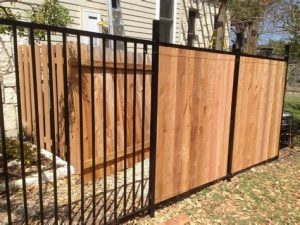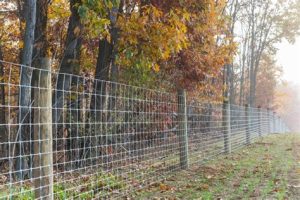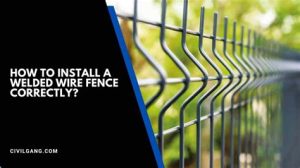Learn about the legal consequences, fines, and effects on property value of unpermitted fence installation. Discover steps to rectify the situation.Installing a fence can enhance your property’s aesthetics, provide privacy, and create defined boundaries. However, many homeowners overlook an essential step in the process: obtaining the necessary permits. Failing to secure a permit before installation can lead to a series of unforeseen consequences that may jeopardize your investment. From legal repercussions to costly fines, the risks associated with unpermitted fence construction can have lasting effects on both your property value and peace of mind. In this blog post, we will explore the various consequences of installing a fence without a permit, including potential legal ramifications, financial penalties, and steps you can take to rectify the situation. Whether you’re considering a simple garden wall or a grand privacy fence, understanding the importance of permits is crucial to protecting your property and ensuring compliance with local regulations.
Consequences of Unpermitted Fence Installation
Installing a fence without a required permit can lead to several consequences that homeowners might not initially consider. One of the primary issues is the potential for legal action taken by local authorities or neighbors. Zoning laws and regulations are put in place to ensure that all installations adhere to community standards, and violating these can result in fines or mandates to remove or alter the fence.
Another significant consequence of unpermitted fence installation is the impact on your home’s resale value. Real estate agents often advise potential buyers to steer clear of properties with unpermitted structures, including fences. This can create hurdles during property transactions, leading to lower offers or even legal disputes during the sale process.
Finally, living with a fence that has been installed illegally can create ongoing stress for homeowners. The possibility of having to dismantle or modify the fence adds uncertainty and can affect the homeowner’s enjoyment of their property.
Legal Ramifications for Installing Fence Without Permit
Installing a fence without the required permit can lead to a variety of serious legal ramifications. Homeowners often underestimate the importance of securing a permit before engaging in construction activities. However, ignorance of the law does not exempt you from the consequences.
The legal issues that arise can include fines, orders to remove the fence, and even potential legal disputes with neighbors. Depending on your local laws, enforcement varies—from a simple citation to a civil lawsuit aimed at resolving boundary disputes or property encroachments. Such legal entanglements can be time-consuming and financially draining.
Moreover, you might also face issues related to property value. If your fence is deemed unsafe or is removed by the authorities, it could impact the overall value of your property. Potential buyers might shy away from purchasing a home that does not comply with zoning laws or building codes. Proper planning can prevent these headaches and the negative impact they have on your property.
Potential Fines for Unauthorized Fence Construction
When it comes to installing a fence, many homeowners are surprised to learn that permits are often required by local municipalities. Failing to secure the appropriate permits can lead to significant consequences, particularly in the form of fines. Understanding these potential fines can help prevent unintentional violations during your fencing project.
The fines for unauthorized fence construction can vary widely depending on your location and the specific regulations in place. Some localities impose a nominal fine for first-time offenses, which can range from $50 to $500. However, repeated violations or more significant infractions can lead to much steeper penalties, sometimes exceeding $1,000. It’s crucial for homeowners to be aware of these potential costs associated with non-compliance to avoid unexpected financial burdens.
Moreover, in addition to direct fines, there may also be indirect costs associated with the need to remove or modify an unpermitted fence if it doesn’t meet zoning or property line regulations. Homeowners might find themselves needing to invest additional funds and labor to rectify the situation, further compounding the overall expenses. In essence, securing the proper permit before starting your fence installation is the best way to avoid unnecessary tension and financial strain.
Impact on Property Value without Proper Permit
Installing a fence without a permit can have significant implications, especially when it comes to your property’s value. Many homeowners assume that a fence is a simple addition, but the reality is that an unpermitted fence can lead to a devaluation of your property for several reasons.
First, an unpermitted fence can create legal complications that may deter potential buyers. If prospective buyers discover that the fence was installed without the necessary legal approval, they might hesitate to purchase the property, fearing future legal complications or the need to remove the fence. This hesitation can lower the overall appeal and therefore the market value of the property.
Moreover, neighborhoods often have specific zoning regulations and aesthetic guidelines that contribute to property values. An unpermitted fence might violate these regulations, making your property less desirable compared to others in the area. Compliance with local building codes is crucial not just for legality but also for maintaining a property’s investment value.
Overall, the impact on property value due to an improperly permitted fence can be substantial, resulting in decreased marketability and potential financial losses in the long run.
Steps to Rectify Unpermitted Fence Installation
Installing a fence without the necessary permits can lead to a myriad of complications. However, if you find yourself in this situation, there are several steps you can take to rectify the issue and ensure your property complies with local regulations.
1. Consult Local Regulations: Start by reviewing your local zoning laws and building codes related to fence installation. Many municipalities have specific guidelines regarding what types of fences are permissible, their height, and where they can be placed. Understanding these rules is crucial in determining your next steps.
2. Communicate with Local Authorities: Reach out to your local planning or building department. Inform them of your situation and seek guidance on how to proceed. They may provide you with the necessary forms or procedures for obtaining a retroactive permit. Be honest and transparent about your fence installation; this can help in navigating through any potential fines or penalties.
3. Prepare for Inspections: Once you have submitted your permit application, you may need to schedule an inspection of your fence. Ensure that the installation meets all safety regulations and standards. Be prepared to make any necessary adjustments or modifications as advised by the inspector.
4. Apply for a Variance: If your fence does not comply with local regulations, you might need to apply for a variance. This is a formal request to deviate from the existing zoning laws. The process often involves public hearings where neighbors can express their opinions, so be sure to gather support from the community.
5. Rectify and Comply: If your fence is found to be non-compliant, you may need to alter or even remove it to adhere to the local regulations. Take this opportunity to decide on the best course of action that will maintain the aesthetics of your property while complying with legal requirements.
By taking these steps, you can effectively address any issues related to unpermitted fence installations.
Frequently Asked Questions
What are the potential consequences of installing a fence without a permit?
Potential consequences can include fines, mandatory removal of the fence, and complications in property disputes.
How can I find out if I need a permit for my fence?
Check with your local zoning office or building department to learn about specific regulations and requirements for fencing in your area.
What types of fences typically require a permit?
Typically, taller fences, those made of specific materials, or fences installed in certain zones (like front yards) may require a permit.
What should I do if I’ve already installed a fence without a permit?
Contact your local authorities as soon as possible to discuss the situation and explore options for obtaining a retroactive permit.
Can I be fined for having an unpermitted fence?
Yes, local municipalities can impose fines for property owners who install a fence without the required permits.
How can installing a fence without a permit affect my property value?
An unpermitted fence can negatively affect property value if it leads to legal disputes or if potential buyers see it as an issue needing rectification.
What steps can I take to ensure my fence installation is compliant with local laws?
Research local regulations, consult with the zoning office for permit requirements, and possibly seek professional advice or assistance.





